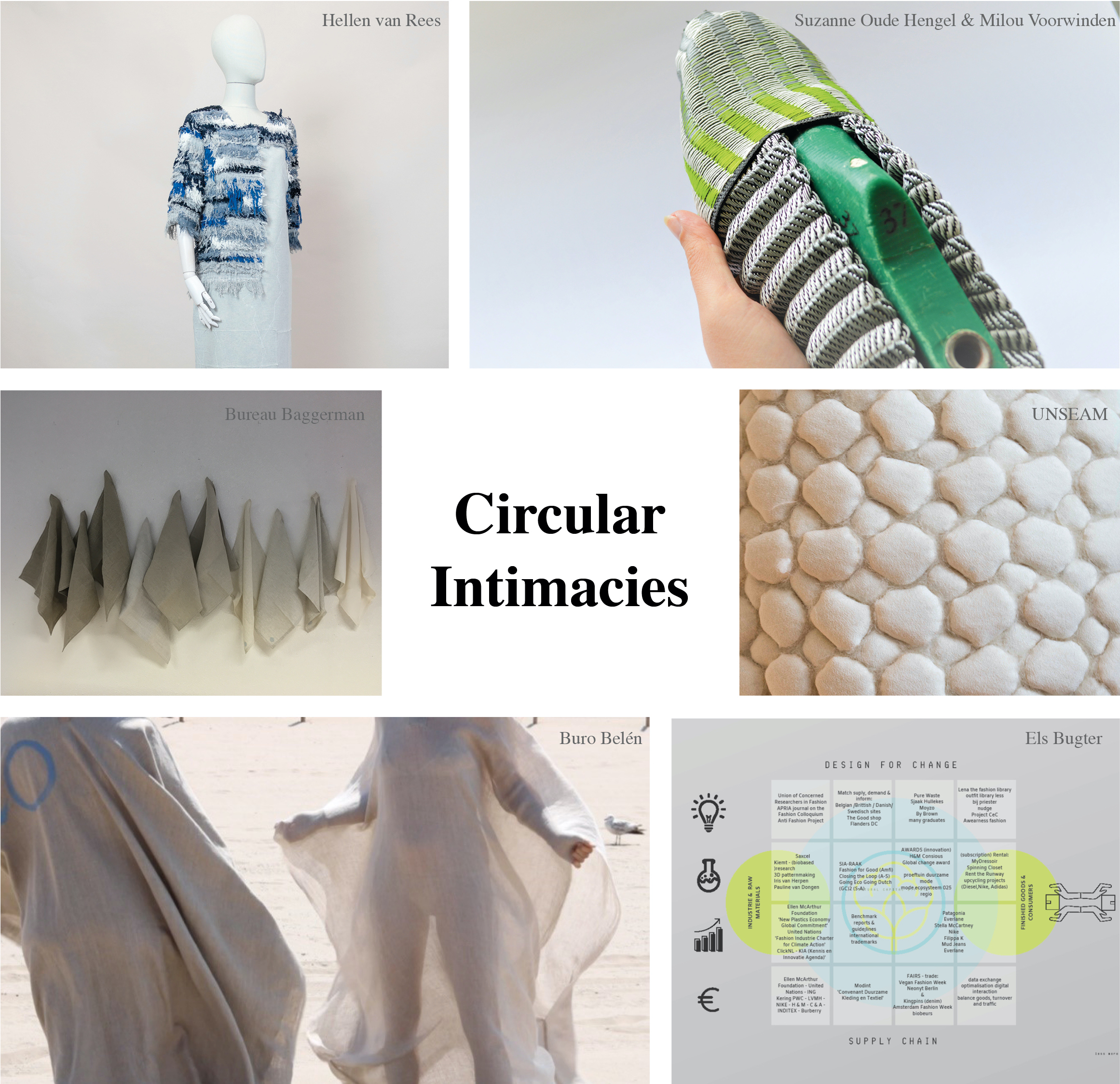We would like to present the end report ‘Circular Intimacies’ by Daniëlle Bruggeman, Anja Köppchen and Freya Zaplata as well as the report ‘Recommendations for a Circular Design Practice’ by Zinzi de Brouwer – developed as part of the collaborative research project ‘Going Circular, Going Cellulose’ (2018-2021), in short (GC)2.
(GC)2 is funded by SIA-RAAK-mkb, led by Saxion University of Applied Sciences in collaboration with ArtEZ, with Enschede Textielstad, Alcon Advies, Permess, and JB Textiles, as well as the designers Hellen van Rees, Els Bugter (Tous les Chéris), Michelle Baggerman (Bureau Baggerman), Suzanne Oude Hengel & Milou Voorwinden, Karin Vlug & Bas Froon (UNSEAM) and Lenneke Langenhuijsen & Brecht Duijf (Buro Belén) as technical, industrial and research partners.
In the transition towards a circular economy, and towards a circular fashion and textile system, there is an increased awareness of the importance of interdisciplinary, multi-stakeholder collaborations and co-creation. While the industry, designers, manufacturers and knowledge institutes seem more and more aligned towards a common global goal, within these interdisciplinary collaborations everyone often speaks their own language. However, design is considered to play a vital role in aligning these interdisciplinary collaborations, and the role of the designer as a potential key actor in making sustainable choices by being more and more involved in material development and production processes. However, the exact role that designers can and should play and the challenges that designers face regarding their responsibilities and required competencies is an ongoing discussion.
Therefore, the ‘circular design’ work package of the research project (GC)2, explored: Which circular design principles are essential for the transition to a circular textile and fashion chain, and which form of value-creation is important when designing and developing sustainable textiles and clothing (made from sustainable cellulose fibers)? It focused on an integrated process of multi-stakeholder value creation from a design-driven perspective on textile development.
(GC)2 aimed at drawing more attention to an integrated approach of technical design, aesthetic design and product design. As part of a design-driven approach, the project aimed at having designers participating proactively in the early stages of material development and production processes.
The end report ‘Circular Intimacies’ (2021) presents the most important findings and new insights into multi-stakeholder co-creation, circular design principles and co-design for circularity. Our key conclusions are related to the context and interdependencies of the design principles, the practice and abilities of designers and their circular design process, the role of design objects in creating a mutual language and understanding, the underlying values required for co-creation and co-design, the role of aesthetics and the relationship with the user and/or wearer, and the ‘intimacy’ and relational proximity needed for local, circular processes of production. The report can be read here.
As part of this project, Zinzi de Brouwer developed the report ‘Recommendations for a Circular Design Practice: Reflections on Designing for a Circular Textile and Fashion System for Students and Emerging Designers’ (2020). This is aimed at starting designers who are invested in designing for the circular economy and in turn wish to incorporate and adhere to key circular design principles in their design practices. Herein, transformative design behaviours are encouraged that optimise circular business models to function, in which products, services and wider systems are reframed and redesigned. The guideline advocates the transition from a throw-away system to a regenerative one from within. It acknowledges the importance of interdisciplinary collaborations to pave the way for designers, manufacturers, producers and consumers to adopt circular design methods throughout the entire supply chain of a product. It is also based on the belief that the sharing of information and data is imperative in advocating for a holistic fashion system in which a functional circular design and economy is key. This report can be read here.
The results of the project are visualized in an e-book 'Going Circular, Going Cellulose', and is visible here.
The research is summarized into an interesting video, visible below.
